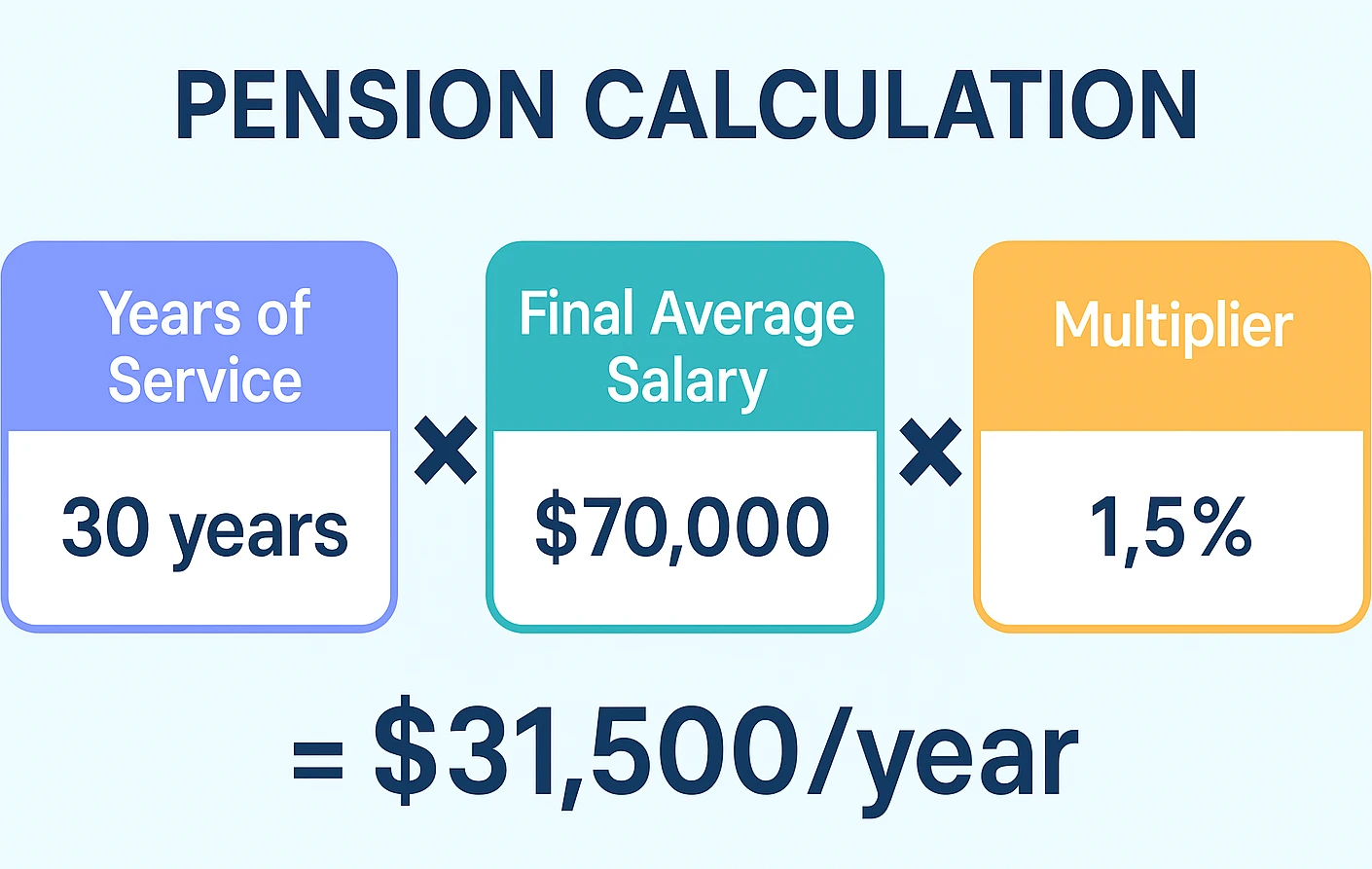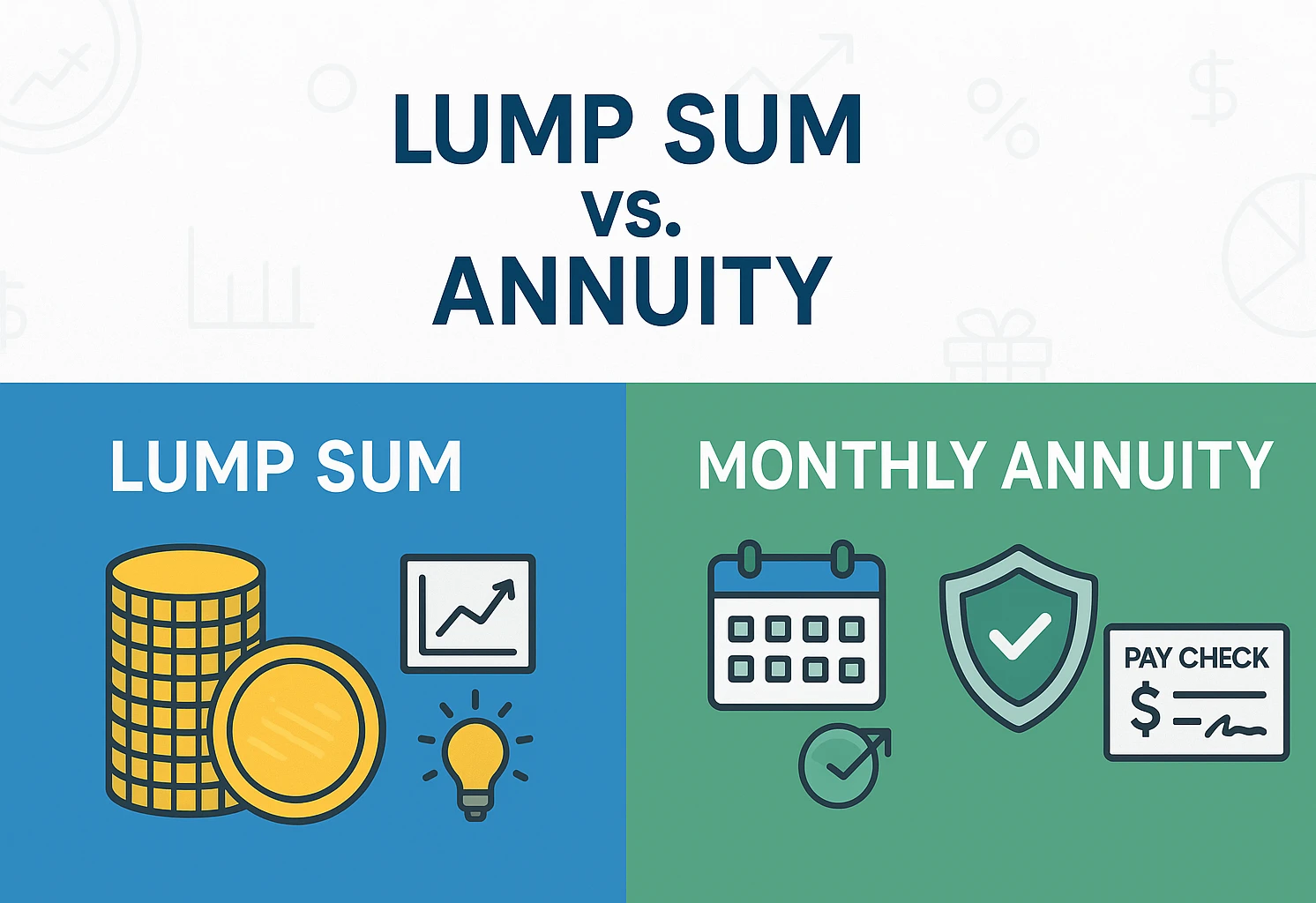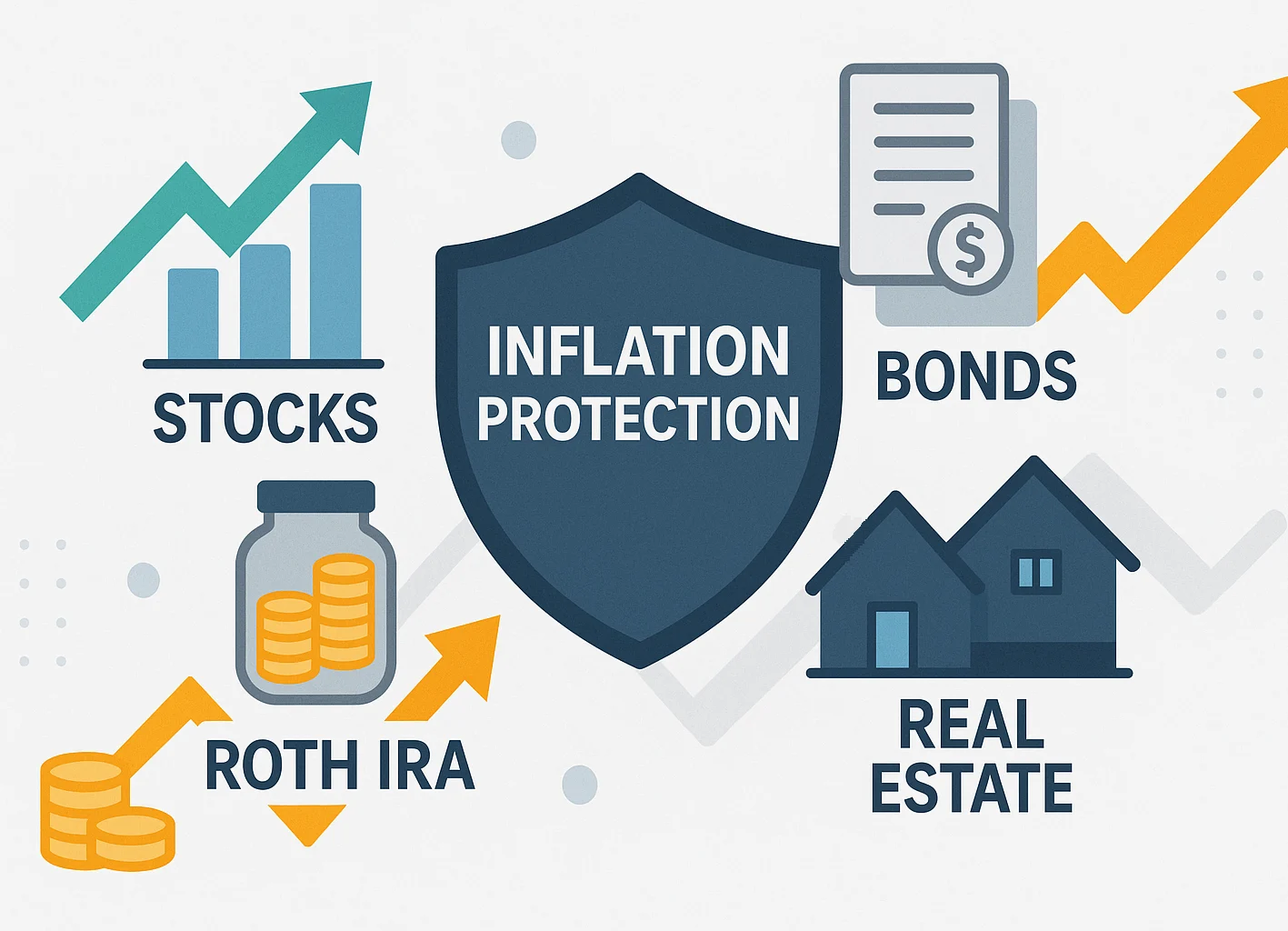
Your dream of early retirement can become reality with the right plan. If you’re retiring at 55 with a pension, the path is clearer when you understand your options and sequence your income sources.
This comprehensive guide walks you through every step of retiring at 55 with a pension. Specifically, we’ll cover how to evaluate payout options, navigate early withdrawal reductions, and integrate your pension with savings like a 401(k) or Roth IRA. So, let’s dive in and turn your early retirement dream into a financially secure reality!
Plan Your Retirement Now!Table of Contents
- Key Takeaways for Retiring at 55 with a Pension
- The Allure of Retiring at 55
- Understanding Your Pension
- Evaluating Pension Payout Options
- Navigating Early Withdrawal Reductions
- Interactive Calculator for Retiring at 55 with a Pension
- Coordinating Income Streams
- Mitigating Inflation’s Impact
- Managing Taxes
- Health Insurance Before Medicare
- Maximizing Social Security
- Steps to Plan
Key Takeaways for Retiring at 55 with a Pension
- Early Retirement is Achievable: Retiring at 55 with a pension is possible with careful planning, understanding your plan’s rules, and coordinating income sources.
- Pension Options Matter: You’ll face choices like lump sum versus monthly annuity and single life versus joint & survivor options, each impacting your financial security and taxes.
- Early Withdrawal Reductions: Most pensions reduce benefits if you start collecting before the full benefit age, often permanently lowering your monthly income.
- Integrate Income Streams: Combine your pension with 401(k)s, Roth IRAs, and other savings, leveraging rules like the “Rule of 55” for tax-efficient withdrawals.
- Plan for Health and Social Security: Health insurance costs before Medicare (age 65) and delaying Social Security can significantly affect your financial plan.
The Allure of Retiring at 55: A New Chapter Begins
Picture this: you hit 55, and freedom’s knocking. You’re full of energy, dreaming of road trips, new hobbies, or time with family. If you have a pension, that milestone can feel like winning the lottery—a steady paycheck for life. But if you’re considering retiring at 55, you’ll want to avoid costly benefit reductions. Here’s how to navigate it, step by step.

Understanding Your Pension: The Bedrock of Early Retirement
A pension is a promise from your employer: a set monthly check based on service, earnings, and age. Unlike a 401(k), they manage the investing, so you don’t have to watch the markets daily. For those retiring around 55, understanding the plan’s rules is the key to maximizing cash flow.
Core Pension Concepts for Early Retirement at 55
- Vesting: To collect benefits, you must be vested, typically requiring 3–5 years of service. Once vested, you’re entitled to benefits even if you leave early.
- Full Benefit Age: When you receive 100% of your calculated pension—often 60–65 or based on a “Rule of X” (e.g., age + service = 80).
- Early Retirement Age: Many plans allow benefits as early as 55, but with reduced payments.
- Pension Formula: Your benefit is calculated as:
(Years of Service) × (Final Average Salary) × (Multiplier/Accrual Rate)
Example: 30 years of service × $70,000 × 1.5% = $31,500/year at full benefit age. Retiring at 55 likely reduces this amount.
Evaluating Pension Payout Options
As retirement nears, you’ll choose how to receive your pension. The decision affects lifetime income and flexibility, so align the option with your goals and your other savings.
Lump Sum vs. Monthly Annuity

This is a big decision that will shape your retirement.
Monthly Annuity: Steady Cash for Life
A monthly annuity is like a paycheck that never stops—predictable and market-agnostic. Downsides include less flexibility, inflation risk, and reduced legacy potential with single-life options. For more on annuities, see Fidelity’s guide.
- Pros: Predictable income, no investment risk, longevity protection.
- Cons: Limited flexibility, potential inflation risk, no inheritance with single-life options.
Lump Sum: You’re in Charge
A lump sum provides flexibility and the potential for growth or legacy, but requires disciplined investing and risk management.
- Pros: Flexibility, potential investment growth, inheritance options.
- Cons: Investment risk, longevity risk, tax complexities.
Single Life vs. Joint & Survivor Annuity
If you opt for an annuity, you’ll decide between:
- Single Life Annuity: Highest monthly benefit, but payments stop at your death.
- Joint & Survivor Annuity: Lower payments, but benefits continue for your spouse after your passing.
Navigating Early Withdrawal Reductions at 55
Starting a pension early often means actuarial reductions. Here’s why and how to plan around them.
Why Pensions Reduce Benefits Early
Plans assume a full benefit age (e.g., 65). Starting at 55 increases payment years, so each monthly payment is smaller to keep the lifetime value similar.
How to Calculate Your Reduction
- Full Benefit Age: 65
- Retirement Age: 55
- Years Early: 10
- Full Pension: $31,500/year
- Reduction Rate: 5% per year early
Calculation:
- Total Reduction: 10 years × 5% = 50%
- Reduced Annual Benefit: $31,500 × 0.50 = $15,750/year
- Monthly Benefit: $15,750 / 12 = $1,312.50/month
Some public plans offer “Rule of X” (e.g., Rule of 80), granting unreduced benefits if age + service reaches a threshold. Check your SPD.
Strategies to Minimize Reductions
- Work Longer: Even part-time work may reduce or eliminate the reduction.
- Know Your Plan: Understand age and service rules to optimize timing.
- Phased Retirement: Reduce hours while still accruing service toward your pension.

Interactive Calculator for Retiring at 55 with a Pension
Calculate Your Pension for Retiring at 55
Estimate how early retirement impacts your pension benefits.
Your Pension Outlook:
Status:
Full Annual Pension (at age ): $
Years Retiring Early: years
Total Reduction: %
Net Monthly Benefit at : $
Break-Even Age: Age
💡 To optimize your pension, consider delaying retirement or consulting your plan’s SPD.
Coordinating Income Streams for a Secure Retirement
Your pension is the foundation; pairing it with other savings makes early retirement at 55 more resilient. By blending income sources—like a 401(k) or Roth IRA—you can build a buffer that supports lifestyle and healthcare costs.
Your Pension as the Foundation
Think of your pension as covering essentials. This stability lets other savings flex with markets and goals.
401(k) and 403(b): Leveraging the Rule of 55
Accessing 401(k) or 403(b) funds at 55 without penalties is possible with the “Rule of 55.”
- Rule of 55: If you leave your job at 55 or later, you can withdraw from that employer’s 401(k)/403(b) without the 10% penalty. It applies only to that employer’s plan.
- Taxes Apply: Withdrawals are taxed as ordinary income.
- Strategy: Use these funds to bridge income gaps before starting your pension or Social Security.
Roth IRA: Tax-Free Flexibility
Roth IRAs offer tax-free withdrawals once rules are met and can help manage taxes before 59½.
- Contributions: Withdraw contributions anytime, tax- and penalty-free.
- Earnings: Tax-free after age 59½ and a 5-year holding period.
- Strategy: Use contributions early to manage taxable income.
Other Savings: Brokerage Accounts & HSAs
- Brokerage Accounts: No withdrawal restrictions, but capital gains taxes apply.
- HSAs: Tax-free for medical expenses; non-medical withdrawals before 65 incur a 20% penalty.
Mitigating Inflation’s Impact on Your Pension
Most pensions lack cost-of-living adjustments, so inflation can erode purchasing power. For example, a $1,312.50 monthly pension today could feel like $1,000 in 10 years at 2% inflation.
Strategies to Combat Inflation
- Invest Lump Sums: If you choose a lump sum, invest in diversified assets to outpace inflation.
- Supplement with Savings: Use Roth IRA or brokerage earnings to offset rising costs.

Managing Taxes in Early Retirement
Taxes can surprise early retirees. Here’s how pensions are taxed and ways to plan ahead.
Pension Taxation
- Federal Taxes: Pension payments are ordinary income, reported on Form 1099-R.
- State Taxes: Vary by state; some exempt pensions fully or partially.
| State Tax Status | Description |
|---|---|
| No Income Tax | Alaska, Florida, Nevada, South Dakota, Tennessee*, Texas, Washington*, Wyoming |
| No Pension Tax | Alabama, Illinois, Hawaii, Mississippi, New Hampshire*, Pennsylvania, South Carolina |
| Partial Exemption | Colorado, Georgia, Iowa, Kansas, Kentucky, Louisiana, Michigan, Missouri, Montana, New Jersey, New York |
| Fully Taxable | California, Connecticut, Delaware, Idaho, Indiana, Maine, Maryland, Massachusetts, Minnesota, Nebraska |
*New Hampshire and Tennessee tax interest/dividends, not pensions.
Tax-Minimization Strategies
- Tax Diversification: Draw from taxable, tax-deferred, and tax-free accounts strategically.
- Roth Conversions: Convert pre-tax funds to Roth IRAs in low-income years (consult a tax professional).
- Estimated Taxes: Pay quarterly estimates if withholding is insufficient.
Health Insurance Before Medicare
Health insurance is a major expense before Medicare at 65.
- COBRA: Continue employer coverage for up to 18 months, though it’s costly.
- ACA Marketplace: Buy plans with potential subsidies based on income.
- Spousal Coverage: Join a spouse’s plan if available.
- Retiree Benefits: Some employers offer retiree health plans.
Maximizing Social Security by Delaying
Delaying Social Security until your full retirement age (66–67) or age 70 boosts benefits significantly.
Benefits of Delaying
- Increased Benefits: Delaying past FRA increases benefits by ~8% per year until 70.
- Longevity Insurance: Higher benefits help protect against outliving savings.
- Bridge with Pension: Use pension and savings to delay Social Security.
| Claiming Age | % of Full Benefit | Benefit at FRA ($2,000) |
|---|---|---|
| 62 | 70% | $1,400 |
| 65 | 86.7% | $1,734 |
| FRA (67) | 100% | $2,000 |
| 68 | 108% | $2,160 |
| 70 | 124% | $2,480 |
Spousal Benefits
Delaying your benefit can increase survivor benefits for a spouse, enhancing long-term security.
Steps to Plan for Retiring at 55 with a Pension
Take these steps to prepare:
- Get Your Pension Statement: Review vesting, benefits, and payout options.
- Understand Plan Rules: Check reduction rates and “Rule of X” provisions.
- Consult a Financial Advisor: Model scenarios and optimize income.
- Create a Budget: Account for healthcare and lifestyle costs.
- Maximize Savings: Use catch-up contributions for 401(k)/IRAs.
- Explore Health Insurance: Research COBRA, ACA, or spousal plans.
- Test Your Budget: Live on your projected income for a trial period.
Frequently Asked Questions
Conclusion: Your Path to Retiring at 55
With a solid plan, early retirement at 55 becomes realistic. Understand your pension, coordinate other accounts, and plan for healthcare and taxes. Small timing choices can meaningfully improve lifetime income. Start now and keep refining as your numbers change.
This content is for informational purposes only and not financial advice. Consult a qualified professional before making financial decisions.

